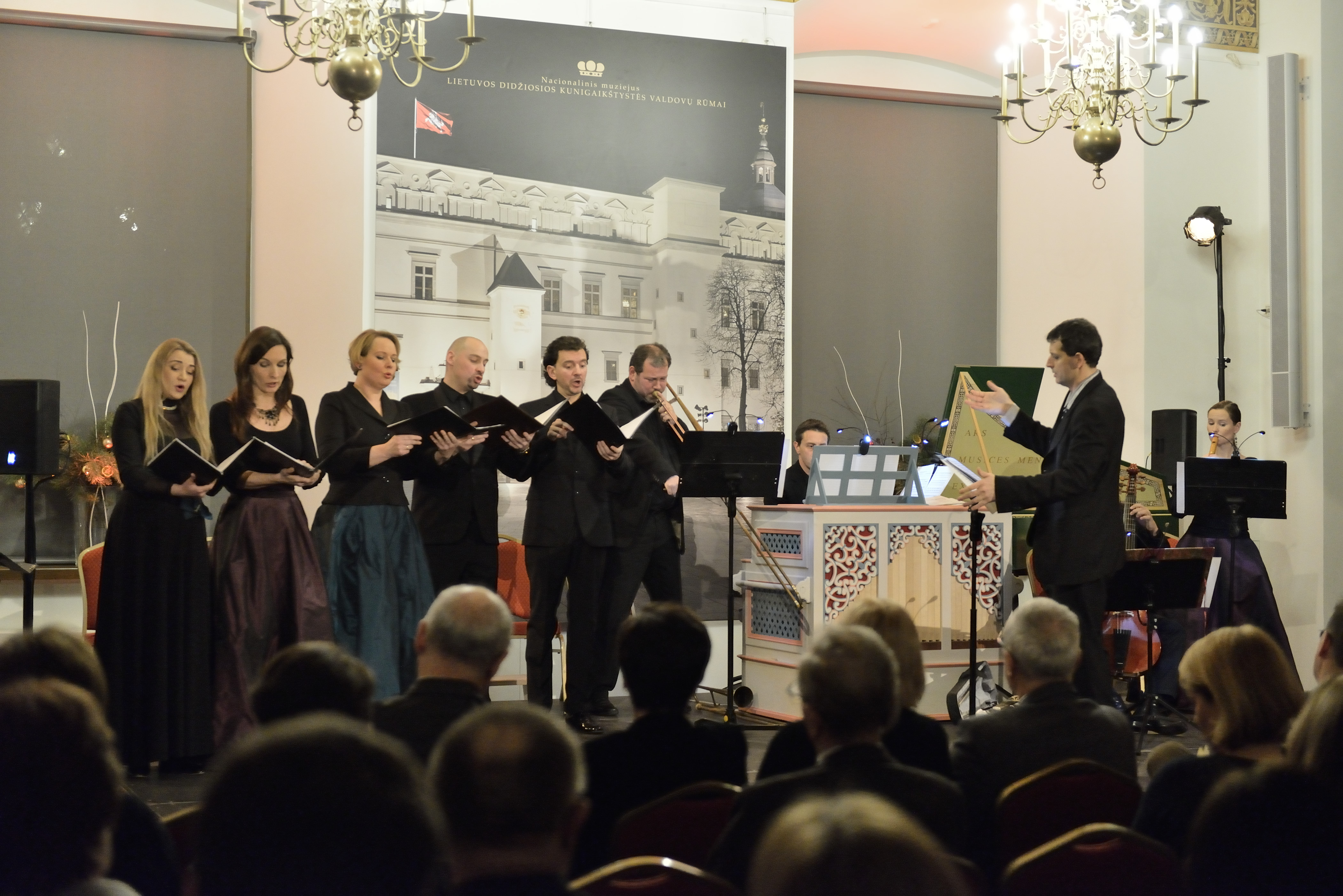|
|||||||||
CANTO FIORITO
From Rome to Vilnius
Sunday 19 August at 7 pm, Kretinga Franciscan Church
Canto Fiorito
Artistic director Rodrigo Calveyra
Lina Dambrauskaitė, soprano
Renata Dubinskaitė, mezzo-soprano
Saulė Šerytė, mezzo-soprano
Algirdas Bagdonavičius, tenor
Nerijus Masevičius, bass
Josue Melendez, cornetto
Rodrigo Calveyra, cornetto
Juan Manuel Quintana, viola da gamba
Davide Pozzi, organ
The concert programme “From Rome to Vilnius” is a new investigative insight into the heritage of Lithuania – the music of the Vasa’s Court in the Polish-Lithuanian Commonwealth. It reflects the influence of the greatest masters of the Roman Polyphonic School for the musical scene of Lithuania and reveals the Vasa’s Court as the place of the highest-level music making in XVI–XVII century Europe.
At the end of the XVI century Italy was becoming the main influence in the music field in Europe, not only because of all different styles that were been produced there (polyphony, poly-choral, monody, opera, etc.), but also because of excellence of composers in all these styles. We can clearly distinguish two main music schools in Italy at that time: the Venetian school, founded by Adrian Willaert, with the new poly-choral style to be performed from different balconies at the Basilica di San Marco in Venice. The other was the Roman Polyphonic School of Giovanni Pierluigi da Palestrina, one of the most influent musicians of the XVI century and one of the greatest masters of polyphony of all times.
In a local environment, musicians who had the biggest influence were the so-called kapellmeisters, who were responsible for all the music making in such environments a court, or a church. In the beginning of the XVII century Lithuania and Poland were united in a dualistic state, Polish-Lithuanian Commonwealth, and the most important music location was the royal court of the Vasa’s, having one of the best court orchestras in Europe. Consequently, the kapellmeisters in the Vasa’s court were the most important music authorities of Lithuania and Poland.
From 1595 to 1649 all the kapellmeisters in the Vasa’s court were Italians. Most of them were not only prominent members of the Roman School, but also direct pupils of Palestrina.
Annibale Stabile was the first of this row of Italian masters who came to work as a kapellmeister for the Vasas. He was the pupil of Palestrina in Rome and before coming to the court of Vasas worked as kapellmeister at the Basilica of Santa Maria Maggiore, one of the four Papal Basilicas. Another important composer of the Roman School, who held the position of kapellmeister in Vasa’s court, was Luca Marenzio. As he did not start a clerical career, he was mainly working for several patrons in Rome, such as Luigi d’Este. Asprilio Pacelli, a very important name of the Roman School, pupil of Palestrina as well, worked as kapellmeister for the Vasa’s for 20 years. When he was still in Rome, Pacelli held the position of kapellmeister in the St. Peter’s Basilica, the Papal Basilica in the Vatican City. The next Italian master from the Roman School, who was a kapellmeister in Vasa’s court, was Giovanni Francesco Anerio. He was as well a pupil of Palestrina and worked in the Basilica of St. John Lateran like Stabile. The next composer of this impressive line was Marco Scacchi, the pupil of Anerio, member of the Roman School and the kapellmeister for the Vasa’s for nearly 21 years.
At the beginning of the XVII century, Vilnius court was presided by Leonas Sapiega, the ambassador of Sigismund III Vasa. We do not know much about the music activities in this court, but we know that the Italian composer and singer Giovanni Battista Cocciola worked for many years as kapellmeister for Sapiega.
The program aims to recreate the musical path starting from Palestrina, Marenzio, Stabile, Pacelli, Anerio, Scacchi and ending with Cocciola, thus revealing a huge influence of the Roman School in the music activities of the Vasa’s court.
Additionally the programme is supplemented with pieces from original scores from Vilnius and other Polish-Lithuanian regions. “Liber Tabulature” is a collection of scores for an organ, written in tablature notation in the former Lithuanian Jesuit province of Braunsberg at the beginning of the XVII century and now conserved in Vilnius. The tablature has valuable original diminutions, revealing a very high level of music performance in this region at that time. The programme is completed with some pieces from “Sapiega Album”, another XVII century organ tablature from Vilnius.
Rodrigo Calveyra
Programme
Giovanni Pierluigi da Palestrina (c.1525–1594) “O Magnum mysterium”
G.P.Palestrina/Francesco Rognoni (?–1626) “Vestiva i colli”
Cipriano de Rore/F. Rognoni (c.1515–1565) “Angelus ad Pastores”
Annibale Stabile (c.1535–1595) “Quam pulchrae sunt”
Luca Marenzio (c.1554–1599) “Beatus Laurentius”
Tarquinio Merula (1595–1665) “La Ruggiera”
Asprilio Pacelli (1570–1623) “Beata es, virgo Maria”
Tarquinio Merula (1595–1665) “Ruggiero”
Giovanni Francesco Anerio (1569–1630) “O quam suavis”
Orlando di Lasso (c.1530–1594)/“Braunsberg Tablature” (1st. half of XVII c.) “Surrexit Pastor Bonus”
“Sapiega’s book” (1st. half of XVII c.) “Indica mihi”
Marco Scacchi (c.1600–1662) “Vobis datum est”
Tarquinio Merula (1595–1665) “La Strada”
Giovanni Battista Cocciola (fl.1610–1620) “Jubilate Deo”
Tarquinio Merula (1595–1665) “Folle è ben che si crede”





